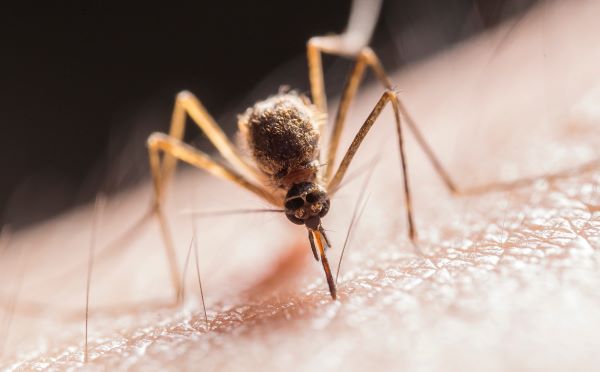Malaria infection in humans, caused by unicellular parasites from the genus Plasmodium and transmitted via the bite of an infected Anopheles mosquito, is a major global health challenge. Researchers are actively searching for new ways to fight the mosquito-borne parasites that cause the disease as well as potential new targets.
Now, scientists at the French National Center for Scientific Research and collaborators report a novel molecule may be able to prevent the invasion of blood cells by parasites of the genus Plasmodium, responsible for malaria.
The findings are published in Nature Communications in an article titled “Mechanism of small molecule inhibition of Plasmodium falciparum myosin A informs antimalarial drug design.”
“Malaria results in more than 500,000 deaths per year and the causative Plasmodium parasites continue to develop resistance to all known agents, including different antimalarial combinations,” wrote the researchers. “The class XIV myosin motor PfMyoA is part of a core macromolecular complex called the glideosome, essential for Plasmodium parasite mobility and therefore an attractive drug target. Here, we characterize the interaction of a small molecule (KNX-002) with PfMyoA. KNX-002 inhibits PfMyoA ATPase activity in vitro and blocks asexual blood stage growth of merozoites, one of three motile Plasmodium life-cycle stages.”
Malaria parasites are motile throughout their complex human and mosquito life cycle. They move by a process called gliding motility, which underpins their ability to reach, cross, and enter host tissues and cells. Gliding is powered by a macromolecular complex called the glideosome, the core of which is comprised of a class XIV myosin A (PfMyoA) interacting with short, oriented filaments of a divergent actin (PfAct1). This myosin motor makes an ideal potential therapeutic target for halting life cycle progression.
The development of small molecules able to specifically activate or inhibit myosin force production has been successful in several other myosin classes. KNX-002 was initially identified as an inhibitor of PfMyoA from high throughput actin-activated ATPase screens performed by Cytokinetics using 50,000 compounds from their library. Because PfMyoA is essential for blood cell invasion, the researchers tested the effect of KNX-002 on P. falciparum asexual, blood-stage growth.
Their results demonstrate that KNX-002 is an inhibitor of PfMyoA activity in vitro, as well as impeding asexual parasite blood stage growth that is a measure of the ability of parasites to invade, replicate, exit, and reinvade erythrocytes, resulting in the symptomatic stage of malaria.
“We demonstrate that KNX-002 inhibits PfMyoA using a previously undescribed binding mode, sequestering it in a post-rigor state detached from actin. KNX-002 binding prevents efficient ATP hydrolysis and priming of the lever arm, thus inhibiting motor activity,” concluded the researchers.
Their new findings pave the way for the development of a new class of antimalarials.

















